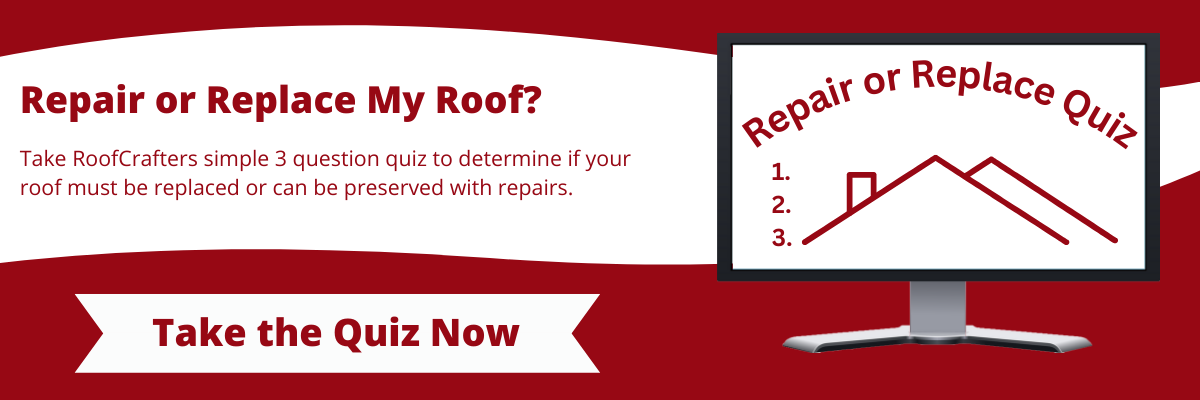5 Signs Your Roof Is Failing
April , 2023 | 6 min. read
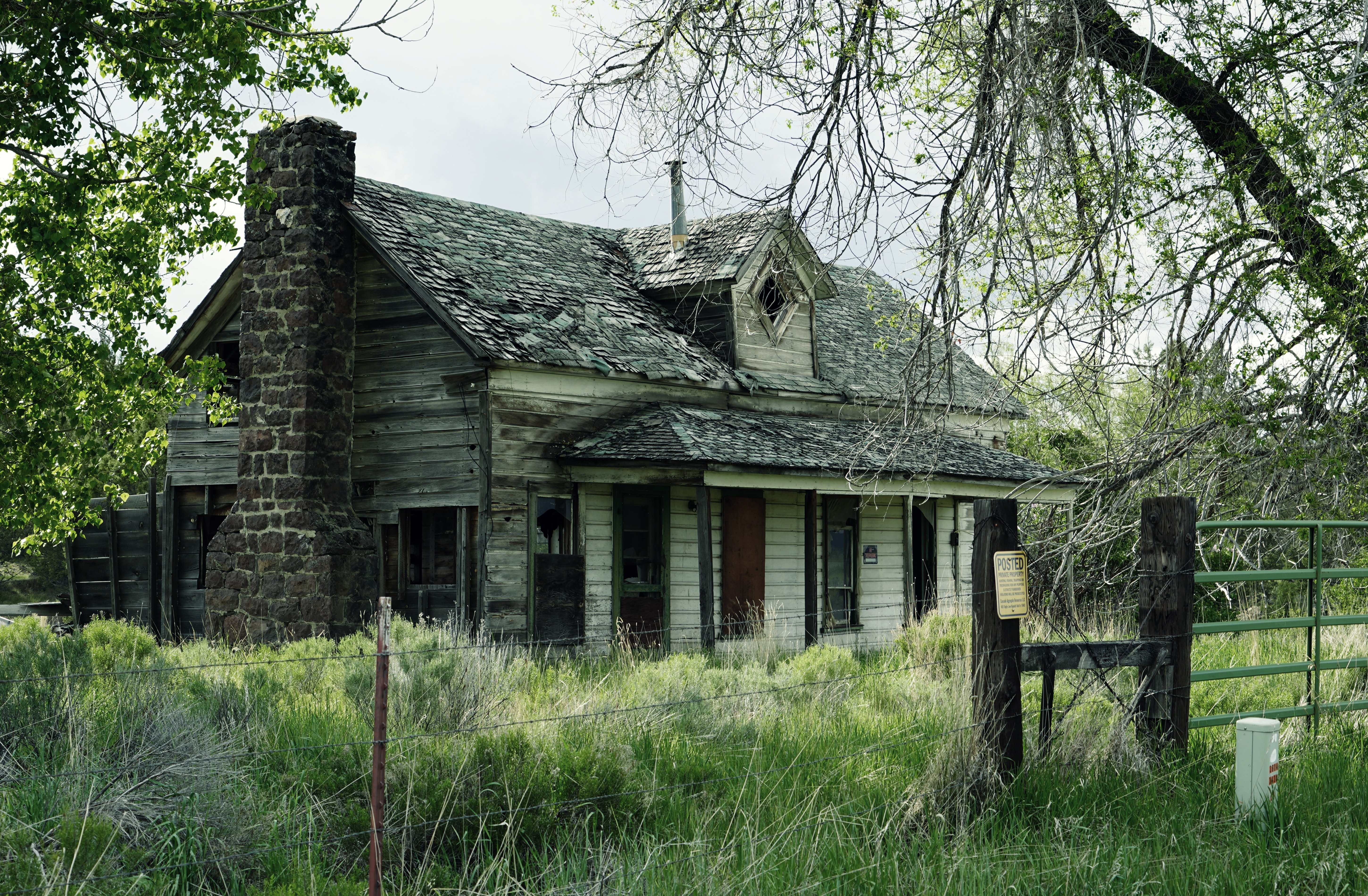
When it comes to the structural integrity of your home, your roof is your first line of defense against the elements. It's the superhero that shields you from rain, wind, and snow and keeps you cozy and dry inside. But like any hero, even the mightiest of roofs can fall victim to their kryptonite - roof failure. Whether it's from old age, poor maintenance, or a bout of bad luck, roof failure can strike at any time, leaving you with a leaky, sagging, or downright collapsing roof.
At RoofCrafters, our roofing superheroes know that roof failure can be caused by several factors such as weather damage, poor installation, and deteriorating shingles. If your roof is approaching the end of its expected lifespan, it's especially important to keep an eye out for signs of wear and tear that could indicate impending failure.
So, what exactly should I be looking out for? I’m glad you asked! In this article, we’ll explore what exactly roof failure is, and the 5 most common signs that show it may be time for a repair or total replacement, including age, damaged or missing shingles, water stains, sagging, and algae growth. Let’s get started!
What Is Roof Failure?
Roof failure refers to the situation where a roof structure is no longer able to perform its intended function due to damage, deterioration, or other issues. This can lead to various problems, including water leakage, structural damage, and safety hazards. Roof failure can occur for several reasons, including poor design, improper installation, inadequate maintenance, exposure to harsh weather conditions, or the natural aging of materials.
Signs of roof failure may include sagging, cracking, blistering, and the presence of water stains or mold. If left unaddressed, roof failure can cause significant damage to a building and pose safety risks to its occupants. This is one of the many reasons why it's incredibly important to regularly inspect and maintain your roof to ensure its integrity and prevent potential failures.
What Are the Signs of a Failing Roof?
Several signs indicate a failing roof including:
- Age: A typical asphalt shingle roof lasts between 15 and 25 years. If your roof is approaching or exceeding this lifespan, it may be time to consider a replacement.
- Missing or damaged shingles: Missing, cracked, curled, or broken shingles can leave your roof vulnerable to water damage.
- Water stains: Water stains on ceilings or walls are often a sign of a leaky roof.
- Sagging: A sagging roof may indicate structural damage, which requires immediate attention.
- Algae or moss growth: While not a direct sign of a failing roof, algae or moss growth can indicate that your roof is not shedding water properly.
If you notice any of these signs, it's best to have a professional roofing contractor inspect your roof to determine the extent of the damage and recommend the necessary repairs.
Age
Roof age can cause roof failure because roofing materials, such as asphalt shingles, degrade over time due to exposure to the elements. Over the years, UV radiation from the sun, wind, rain, and extreme temperatures can cause roofing materials to lose their strength, flexibility, and ability to shed water.
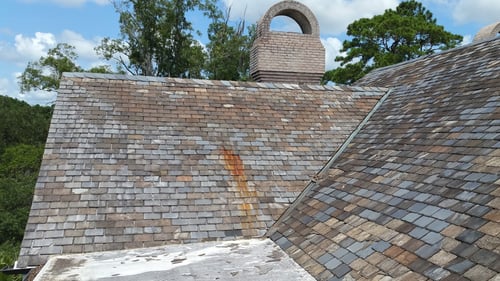
As roofing materials age, they can become brittle, crack, and break, which can cause leaks and damage to the underlying roof structure. The adhesive that seals the shingles together can also deteriorate, causing shingles to come loose or fall off. Additionally, the flashing and seals around chimneys, vents, and other roof penetrations can deteriorate, allowing water to penetrate the roof. No bueno, folks!
Missing or Damaged Shingles
Missing shingles can cause roof failure by leaving the underlying roof structure vulnerable to water damage. Shingles are the first line of defense against the elements, and when they are missing, the roof deck and other components can become exposed to water, wind, and debris.
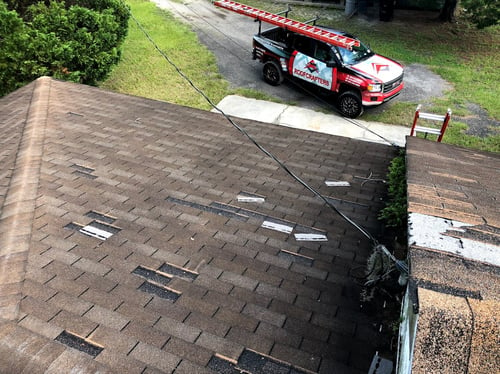
When shingles are missing, it can also create an entry point for water to penetrate the roof. Over time, water can seep into the roof deck, insulation, and other components, causing rot, decay, and structural damage. This damage can compromise the integrity of the roof and potentially cause it to collapse.
Water Stains Indicating a Leak
Water stains themselves do not cause roof failure, but they can be a sign of a leaky roof. If left unaddressed, this can lead to roof failure. Water stains on ceilings or walls can indicate that water is penetrating the roof and making its way into your home.
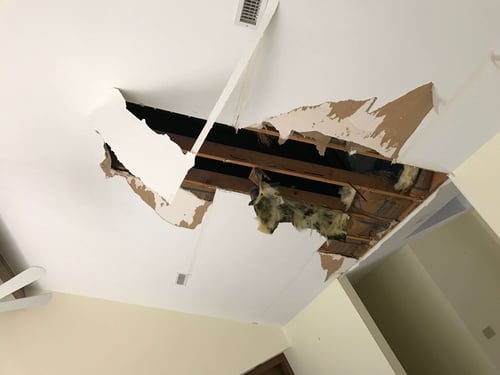
When water penetrates the roof, it can cause damage to the underlying roof structure, insulation, and other components. Over time, this damage can weaken the roof, causing it to sag or collapse. Additionally, water damage can create ideal conditions for mold growth, which can pose health risks to you and your family and further weaken the roof structure.
Sagging
Sagging can cause roof failure because it can indicate structural damage to the roof that, if left unaddressed, can lead to collapse. A sagging roof is a sign that the roof structure is no longer able to support its weight or the weight of the materials on top of it.
When a roof sags, it can cause stress on the roof structure, leading to cracks, buckling, and even a total collapse. Sagging can also cause gaps to form between the roof structure and the shingles, which can allow water to penetrate the roof and cause further damage. If you believe your roof is sagging, take the quiz below to find out if your home requires a simple roof repair or replacement.
Algae/Mold Growth
Algae or mold growth on a roof can cause roof failure by accelerating the deterioration of roofing materials and causing water damage to the roof structure. Algae and mold thrive in moist and shaded areas and can develop on the surface of a roof, particularly in areas with high humidity. Hello, fellow Floridians.
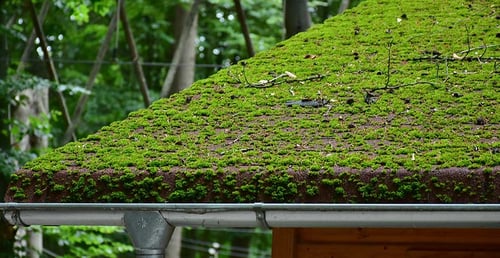
As algae and mold grow on a roof, they can trap moisture, which can cause the roofing materials to degrade more quickly. This can cause shingles to lose their strength, crack, or curl, leaving the underlying roof structure vulnerable to water damage. Over time, water can seep into the roof deck, insulation, and other components, causing rot, decay, and structural damage that can lead to roof failure.
Is My Roof Failing?
As you now know, roof failure can be caused by a variety of different factors. The signs of a failing roof may include age, missing or damaged shingles, water stains on ceilings or walls, sagging, and algae growth. Ignoring these signs can lead to extensive damage to the roof structure and potentially, roof failure.
To prevent roof failure, it's important to have your roof inspected regularly by a professional roofing contractor and address any issues as soon as they arise. Regular maintenance, cleaning, and repairs can help extend the life of your roof and prevent costly repairs or a full roof replacement.
If you suspect that your roof may be failing or if you notice any signs of damage, it's important to act quickly and contact a professional roofing contractor to inspect and repair your roof. Taking a proactive approach to roof maintenance and repairs can help ensure the safety and longevity of your roof, and protect your home and your family from the damaging effects of a failing roof.
My name is Cassie, and I’m the Content Manager here at RoofCrafters. I was born and raised in Chicago, Illinois, and made my way out to Florida post-college graduation. I’m incredibly passionate about writing and creating valuable content that helps others with the collaboration of my marketing team. When I’m not working, I enjoy shopping (a little too much), spending time at the beach, and reading!



